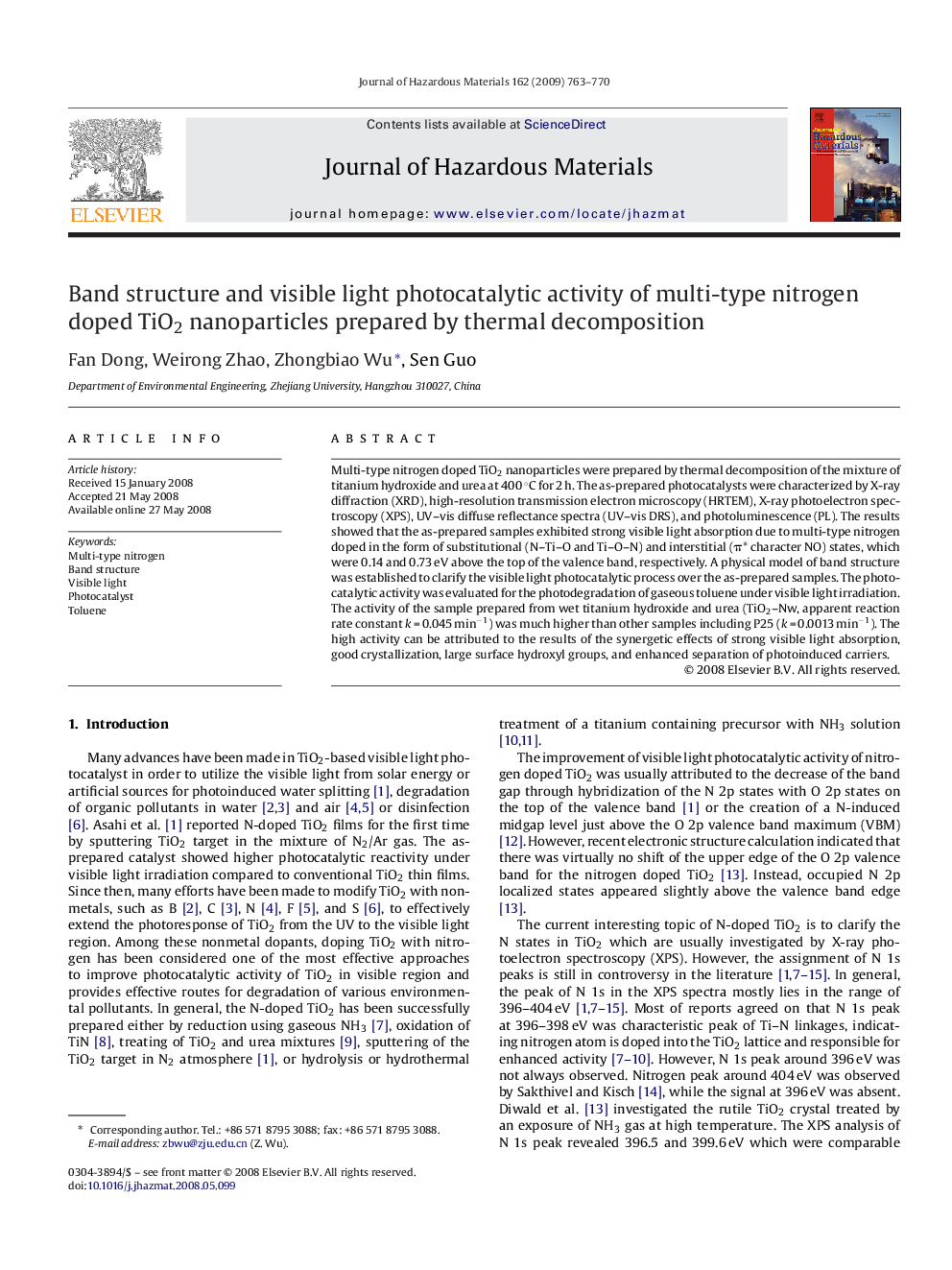| Article ID | Journal | Published Year | Pages | File Type |
|---|---|---|---|---|
| 582359 | Journal of Hazardous Materials | 2009 | 8 Pages |
Abstract
Multi-type nitrogen doped TiO2 nanoparticles were prepared by thermal decomposition of the mixture of titanium hydroxide and urea at 400 °C for 2 h. The as-prepared photocatalysts were characterized by X-ray diffraction (XRD), high-resolution transmission electron microscopy (HRTEM), X-ray photoelectron spectroscopy (XPS), UV-vis diffuse reflectance spectra (UV-vis DRS), and photoluminescence (PL). The results showed that the as-prepared samples exhibited strong visible light absorption due to multi-type nitrogen doped in the form of substitutional (N-Ti-O and Ti-O-N) and interstitial (Ï* character NO) states, which were 0.14 and 0.73 eV above the top of the valence band, respectively. A physical model of band structure was established to clarify the visible light photocatalytic process over the as-prepared samples. The photocatalytic activity was evaluated for the photodegradation of gaseous toluene under visible light irradiation. The activity of the sample prepared from wet titanium hydroxide and urea (TiO2-Nw, apparent reaction rate constant k = 0.045 minâ1) was much higher than other samples including P25 (k = 0.0013 minâ1). The high activity can be attributed to the results of the synergetic effects of strong visible light absorption, good crystallization, large surface hydroxyl groups, and enhanced separation of photoinduced carriers.
Related Topics
Physical Sciences and Engineering
Chemical Engineering
Chemical Health and Safety
Authors
Fan Dong, Weirong Zhao, Zhongbiao Wu, Sen Guo,
